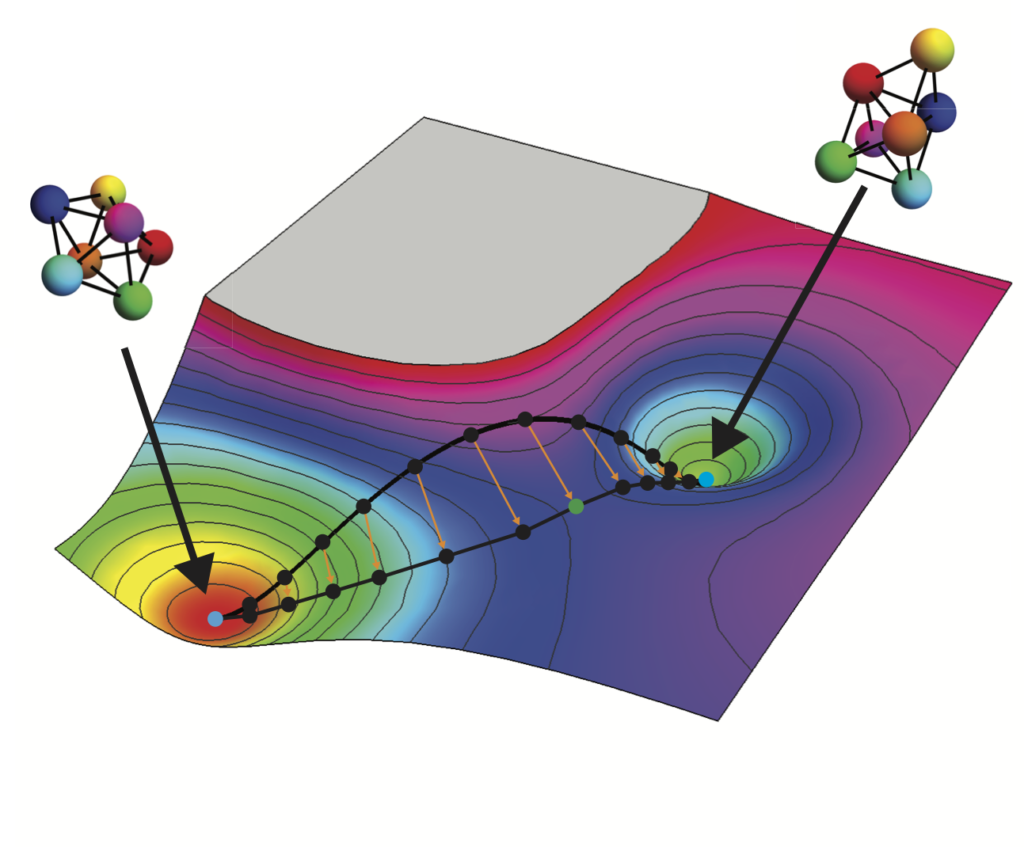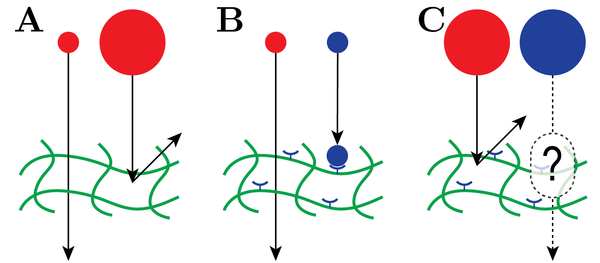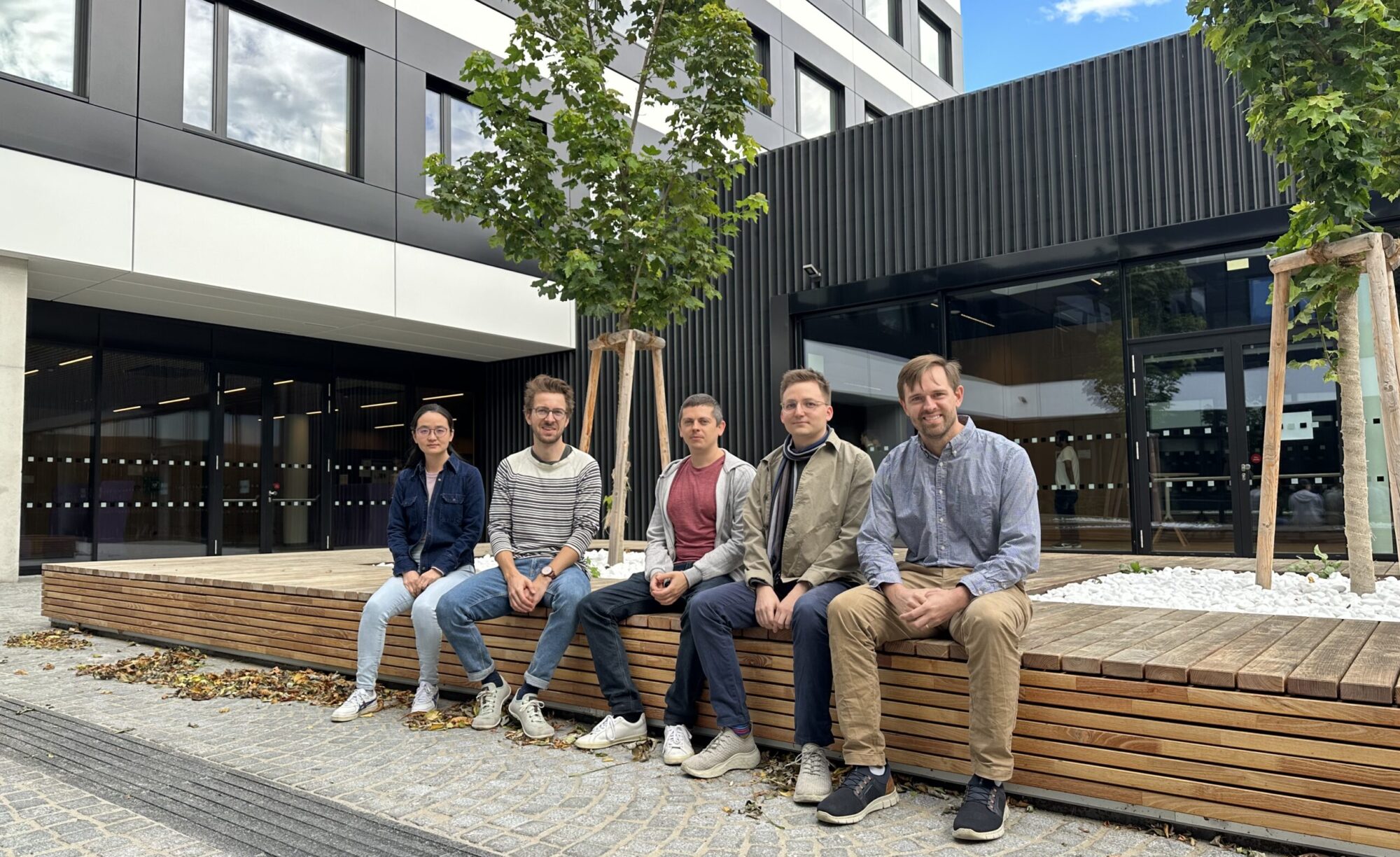Functional Self-Assembly
Self-assembly is a process where a collection of individual objects, or “building blocks,” organize themselves within an environment according to a set of local rules or interactions. Nature is full of self-assembled materials, ranging from crystals to nearly all of biology. We want to understand how this works so we can build new materials out of synthetic building blocks that have the level of complexity and functionality found in biology. Our focus is on connecting properties of the building blocks with complex emergent properties. This requires us to study self-assembly models often with many different types of building blocks, so the challenge is how to understand very high-dimensional parameter spaces.

Relevant publications:
– Designing self-assembling kinetics with differentiable statistical-physics models. CP Goodrich, EM King, SS Schoenholz, ED Cubuk, and MP Brenner. To appear in PNAS (2021).
– Designing allostery-inspired response in mechanical networks. JW Rocks, N Pashine, I Bischofberger, CP Goodrich, A. J. Liu, and SR Nagel. PNAS , 114, Pp. 2520 (2017)
– The Principle of Independent Bond-Level Response: Tuning by Pruning to Exploit Disorder for Global Behavior. CP Goodrich, A. J. Liu, and SR Nagel. Phys. Rev. Lett., 114, Pp. 225501 (2015).
Disordered Solids and Jamming
Packings of soft spheres can tell us a lot about disordered solids. At zero temperature and zero applied stress, such systems experience a jamming phase transition as the density of particles is increased. As a (out-of-equilibrium) critical point, the physics of this transition is highly robust and is believed to be the source of commonality in the behavior of amorphous solids. We are interested in understanding jamming within the context of classical critical phenomena, its connection to real disordered materials, and how our understanding of it can lead to the development of new materials.

Select relevant publications:
– Scaling ansatz for the jamming transition. CP Goodrich, A. J. Liu, and JP Sethna. PNAS, 113, 35, Pp. 9745-9750 (2016).
– Solids between the mechanical extremes of order and disorder. CP Goodrich, A. J. Liu, and SR Nagel. Nature Physics, 10, Pp. 578–581 (2014).
– Finite-Size Scaling at the Jamming Transition. CP Goodrich, AJ Liu, and SR Nagel. Phys. Rev. Lett., 109, pp. 095704 (2012).
Bio-Inspired Material Functionality
Through billions of years of evolution, biology has discovered rich and complex physical principles that it exploits to create increasingly sophisticated materials. Using such biological systems as motivation, we seek to learn physical mechanisms that generalize beyond the specific biological setting and can be used for develop new materials. For example, the Nuclear Pore Complex contains a hydrogel plug that acts as a very odd selective filter: complexes that bind directly to the gel experience enhanced motion and are allowed through. We study this filtering mechanism in a simplified setting to reveal new and robust physical principles.

Relevant publications:
– Enhanced diffusion by binding to the crosslinks of a polymer gel. CP Goodrich, MP Brenner, and K Ribbeck. Nature Communications, 9, Pp. 4348 (2018).
– Using active colloids as machines to weave and braid on the micrometer scale. CP Goodrich and MP Brenner. PNAS, 114, 2, Pp. 257-262 (2017).
Differentiable Statistical-Physics Calculations
A large component of our work involves studying complex emergent phenomena in very high-dimensional parameter spaces. To understand and navigate these spaces, we are at the forefront in the development of “differentiable statistical-physics calculations,” which is a numerical technique that allows one to accurately and efficiently calculate the dependence of an emergent phenomenon on all the underlying parameters. Though not data-driven, this technique has strong ties to machine learning.
For those interested, we strongly encourage you to check out JAX MD, an accelerated and differentiable molecular dynamics library developed by our collaborators at Google Brain.
